Sony’s future Alpha lenses and cameras
More work went into this page than you think! While it was possible to get an idea of Sony’s lenses and cameras planned for 2007-8 from the group image, the individual press images have all been shot to different scales.

By a bit of analysis, it looked as if they have used the same size of focusing scale window on all the lenses along with similar sized SONY and ft/m lettering. Using the measure tool in Photoshop, I found that the smaller black lenses had been shot with the camera in three different but fixed positions, probably moved back on a tripod as the lenses were swapped over. The press photos of the lenses were all actually taken with a Sony Alpha 100 on the same day, despite the poor matching of the black colour.
So, for this page, each individual image has been carefully resized in Photoshop so that you can judge the scale of the lenses – their relative size – and identify which one is which (at least two in the group shot are easily confused).
So what are the lenses? Sony is not saying.
But they have given the press release images filenames, however, such as Large Aperture Wide Angle Zoom and Super Telephoto Zoom. It was already known that a 24-70mm f/2.8 lens was in the pipeline, because a presentation screen flashed up at the July 2006 press conference included this specification. I have kept the original Sony filenames on the images which load into this page. These are not MY names for the pictures, they are the names given by Sony.
Sony executives later confirmed that a fast, standard full frame zoom would be coming, along with a better quality tele zoom (the existing 75-300mm is very much a budget design) and an 18-250mm. We do not believe that any of these prototypes of mock-ups represents the 18-250mm and it’s almost certain to be a Sony revision of the excellent Tamron design (editor’s comments – it turned out to be exactly that).
A Spanish website published imaginary – or leaked – specifications for the lenses in June. Some of this information ties up well with other clues. Here are what I think the new lenses will be. There is some margin for variation, obviously; 16-35mm might be 17-40mm, 80-400mm could be 100-400mm and so on. All the lenses are as far I am able to judge in correct proportion to each other as shown on this page.
This lens is the Large Aperture Standard Zoom. It has a splatter finish paint, which resembles the CZ 16-80mm, and is thought to be the rumoured 24-70mm f/2.8 CZ. When I attended the 2006 launch of the Alpha 100 in Morocco, a mention of this 24-70mm future lens appeared on a Powerpoint presentation very briefly. It has also been mentioned at PMA in March 2007, again with exact specifications. It was known that Konica Minolta was working on a 28-70mmG/28-75mm D replacement 24-70mm. The crackle finish is also used by the current SAL 35mm f1.4 G lens which is not a Zeiss. This finish has not been used on any ‘regular’ plain vanilla Sony SAL lens. So if it’s not a CZ, it is likely to be a G. The front element in this image is retouched in. It’s not real. Most of the other shots appear to show real glass.
Here, shown to scale, is the Large Aperture Wide Angle Fixed Lens. The rumour mill says this is a 24mm f1.4, and the size and shape are about right for that. There is already a 20mm f/2.8 and a 28mm f/2.8 , but 24mm is missing from the line-up. There is a 35mm f/1.4 so the natural ‘fit’ would be a 24mm f/1.4 or something close – maybe an f/1.8. It is in regular Sony SAL satin finish, and is presumed not to be a G or CZ lens. The best clue of all is the name given to the next lens we show – it clearly is not an ordinary (f/2.8 or so) wide angle, but it is not called Large Aperture. It’s probably not wider than 24mm, or it would have been called an Extra or Ultra Wide Angle.
Wide Angle Fixed Lens, this one is called. As you can see, it is fairly compact, and it is in Sony SAL satin standard finish. It looks like a 35mm f/1.8, which is what the prognosis suggests. Why introduce a 35mm f/1.8 when there is a £1,000 35mm f/1.4 already out there? Easy enough – the APS-C format needs a ‘standard’, and the G lens is simply not affordable. Also, a lower cost, more modestly specified 35mm lens would be ideal for a new full frame or 1.25X factor body as well. If this lens is what we think it is, it will be an affordable optic, probably around the same price as the 50mm f/1.4 standard lens. The recess of the front lens element indicates that this is almost certainly a 35mm and is unlikely to be any shorter than 28mm. Carl Zeiss Distagon wide-angle designs, such as the 25mm f/2.8, can be this long and narrow in relative dimensions. However, this is not in the CZ finish.
This is the lens called by Sony a Large Aperture Wide Angle Zoom Lens. Some have suggested this picture shows a new midrange or standard zoom, but Sony’s nomenclature is pretty meticulous. When they say ‘wide angle zoom’ they almost certainly mean the entire range of focal lengths falls in the wide angle domain. The suggested specification is 16-35mm f/2.8, large aperture being a relative term. The finish appears to be the G/CZ splatter black not the satin type, and it has been proposed that this lens is a full-frame Zeiss. I have some doubts about the 16mm proposal, because the front element appears too deeply recessed and the angle of the bezel round the glass does not look sufficiently wide to accomodate 16mm. I think there is a chance this may actually be a 20-35mm f/2.8, not the 16mm which gets everyone excited. That is, after all, only a rumour from a Spanish Minolta forum. But I’m going along with 16-35mm in the hope that Sony will realise the demand and go for it. It is a very large lens and could possibly be an APS-C format 17-55mm f/2.8 Nikon equivalent – but surely they would have called it a Wide Angle to Standard lens, if that was the case.
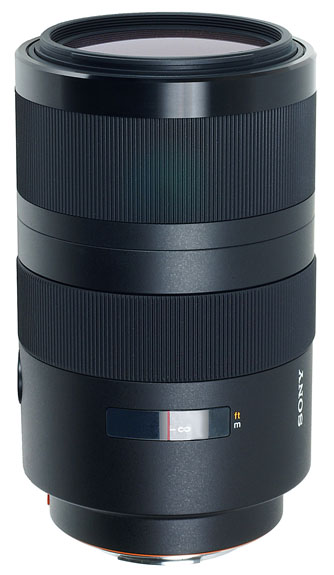
This one, again shown to scale as well as I am able, is called Telephoto Zoom Lens. By this, Sony normally would mean portrait to medium tele. It is certainly small. I think what we are seeing here is a premium quality alternative to the 70-300mm kit lens. It is in splatter finish, which may mean it’s a CZ (editor’s note – it has turned out to be a 70-300mm f/4.5-5.6 G series SSM). The guess at specifications is 70-300mm f/4-5.6 or f/4.5-5.6 (this specification has been mentioned as a definite future lens) but if it’s actually Zeiss, it could be something different, such as 80-240mm or even a relatively unambitious 70-200mm. It is unlikely to be a constant aperture f/4 like the classic 1985 Minolta ‘beercan’ 70-210mm because that double extension clue indicates a long range. Which is the focusing ring and which is the zoom ring? We will have to wait and see.
The reason I don’t say outright that this lens will be the 70-300mm mentioned at PMA is that Tamron also makes a 70-300mm f/4-5.6, which is NOT any relation to the kit 75-300mm f/4.5-5.6 SAL. A forthcoming 18-250mm Sony based on the current Tamron is very likely, but this is not shown in the Sony mock-up range. Nothing based on a Tamron is shown in this set of pre-production models. All possibilities are open; it may be the 70-300mm, it may be something else if the 70-300mm turns out to be based on the Tamron optical unit.
The three longer lenses which follow are so much bigger that their relative scale is probably not so accurate, and could not match the others either – so don’t compare the sizes with the shots above. The group picture gives a much better idea. I have tried to keep them more or less in scale with each other as far as I can tell.
This lens is called by Sony a Super Telephoto Zoom Lens. Sony use very precise definitions. They don’t call their existing 70-300mm a super telephoto, nor the 70-200mm SSM. The assumption is that this lens goes longer than 300mm, and looking at the overall size (the button, the tripod handgrip) it’s not a monster like a 170-500mm Sigma. The rumoured specification is 70-400mm f/4-5.6. It could be a 100-400mm, but it looks fatter than the old Minolta 100-400mm APO. The finish is hard to identify, but could be crackle (it looks to have both smooth and splatter-type paint sections). It might be CZ – the lens hood looks very similar, with its smooth interior paint, to the CZ 16-80mm. A 70-400mm to team up with the 16-80mm would be very logical.
This one is called a ‘Telephoto Fixed Lens’. It is not called Large Aperture, and it is not called Super Telephoto. The diagnosis appears to be 300mm f/4 APO – the white body has always indicated APO or APO G status in the past – and the size is in the region of the 300mm f/4. It could also be a slightly different specification, such as a 280mm, or an aperture like f/4.5 to save weight and bulk. If it was 400mm or longer it would be called a Super Telephoto, if it was f/2.8 it would be called Large Aperture. You can pretty much work out from the name Sony have given this prototype what it is likely to be.
This one is called a Super Telephoto Fixed Lens, and opinions differ on what it may be. I felt from the overall design and size of the handle/tripod bracket that this was a replacement for the 600mm f/4. It has also been suggested that the entire front section is just a hood with nothing inside it, the lens ends with its front element right over the handle mounting point (this has never happened before in any Minolta design) and it is a 400mm f/2.8 APO G. I am fully aware that the front part is a hood, and photographs have been shown of the lens on display with this removed, and a blank silver painted flat end terminating dead at the hood fixing. I do not think the mockup was ever intended to be displayed like that, and there may be another two or three inches of lens assembly ahead of the ‘fake front element’ position as modelled.
I feel that the handle would not be mounted right at the front of a lens, but more at its centre of gravity, and a specification between 400mm and 600mm with an aperture of f/4 is more likely. It could be a 500mm f/4.5, 600mm f/4.5, 450mm f/4 or some other similar specification. The filename for the lens does not say Large Aperture, and surely if the lens was f/2.8, they would have said Large Aperture Super Telephoto Fixed Lens. We really have no idea what possible designs were in the pipeline, except that a replacement SSM motor 600mm f/4 was being designed by Konica Minolta. My feeling is that this lens is that replacement, but they may have decided 600mm was too long.
The specifications I have chosen to give these lenses are speculative. The final lenses may have a different focal length range or aperture. However, it’s taken a lot of discussion and detective work to reach these conclusions and I look forward to finding out just how right or wrong I am in the near future! The best clues lie in the filenames and the relative sizes of the lenses as matched using the product shots.
The cameras
There will be two new cameras, which people who have seen the mockups compare more to the Dynax 7D in size than to the Alpha 100. My feeling is that glass cases may be getting in the way and the size is midway, not as big as the 7D. The D-rings, in proportion to the cameras, indicate a size more like the film Dynax 7 – often considered to be one of the best overall body size and shape choices.
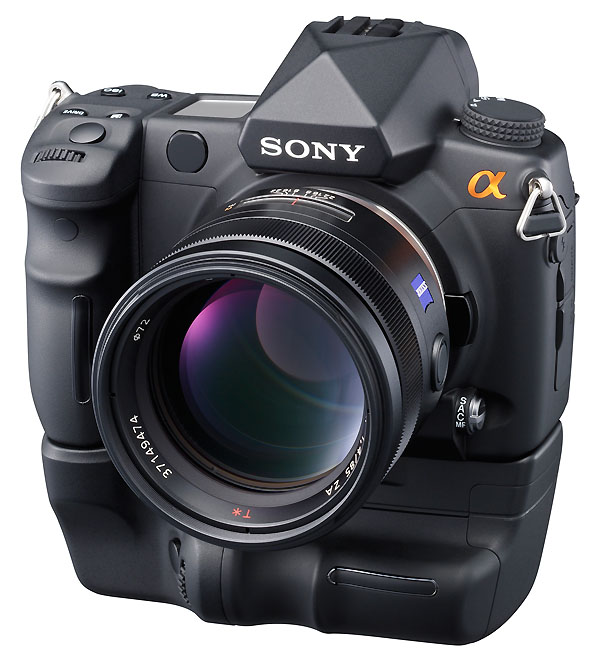
The camera with the very starkly outlined pentaprism housing is called the ‘Flagship’ camera by Sony in the filename for the product shot, indicating that this may be a true professional weapon in specification. This one probably is 7D in size. There is no onboard flash, so in order to work with wireless flash there must either be a built-in controller or a way of attaching a flash command module, probably via the hotshoe. Current wireless flash models can not be used with a separate flash as the controller (you must use the pop-up flash) but the protocol could perhaps be altered. Even so, it’s a big waste to have a large flashgun on the camera just doing the work of controlling off-camera flashes.
The prism will no doubt be glass and there is a fair possibility that this may be a full-frame, or nearly full-frame, model. All the lenses released appear to be full-frame, not APS-C digital only designs. Since film is not in the picture now, we think this means Sony is planning around a full-frame flagship.
The other camera is called the Advanced Amateur model, and is thought to be the planned replacement for the Konica Minolta 7D, restyled and with some of the expensive external mechanical controls replaced by buttons. It is agreed that this is unlikely to be full-frame, but the same format as the Alpha 100. We know for certain that a new sensor and new BIONZ processor will be used because Sony has said so. The latest rumours are that this camera has a 1.25X sensor and 14.x megapixels; however, if this rumoured specification is true (released on a Chinese website) I believe the camera involved is actually the Flagship.
(Editor’s note – the 14.x megapixel rumour turned out to have a basis; 1.25X did not; neither applied to this camera, which was released as the Alpha 700 with a 12 megapixel APS-C sensor – see predictions below)
I think the Advanced Amateur model will have 12.x megapixels in the establish APS-C format. One reason I believe this is the CZ 16-80mm lens. It has such a tight circle of coverage, even at 80mm, that a 1.25X sensor would never be usable with the 16-80mm. I can not see Sony reserving this lens for the A100 only. It is possible that the Large Aperture Wide Angle Zoom lens is a special configuration just for 1.25X format – something like a 20-40mm.
As for the launch dates, trade sources seem convinced that they will have the new amateur model to sell by the end of October 2007. Sony tell us that the two cameras will be announced (firmly) before the end of 2007. Everyone expects the first Flagship working cameras to be seen at the USA Photo Marketing Association show in March 2008. The rumours circulating as I write this in early August are that Sony will hold press conferences on September 4/5th 2007 and dealer launch meetings on September 6/7th. I have received no information or invitations. We have already received invitations to Pentax, Nikon and Canon major launch conferences taking place between August 21st and 25th. It seems likely that Sony will avoid this week (it is pretty busy already!) and that early September is a likely time for their official unveiling of one, or even two, new cameras.
– David Kilpatrick


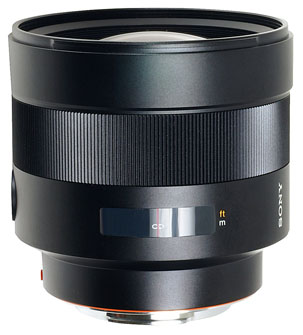
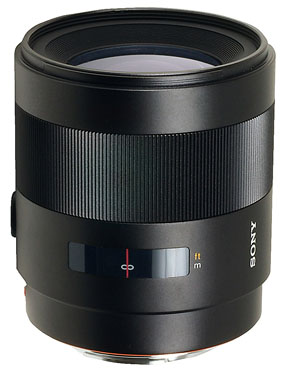
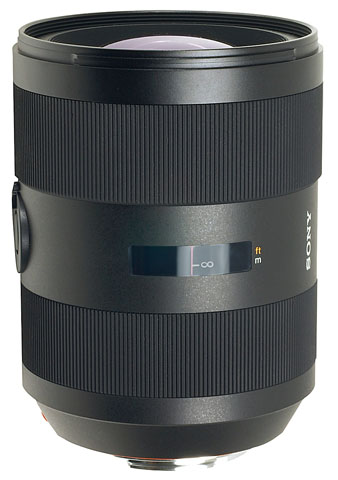

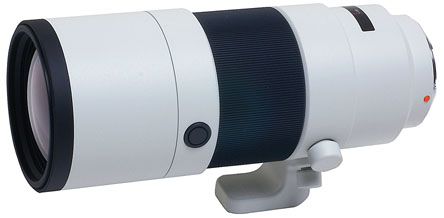
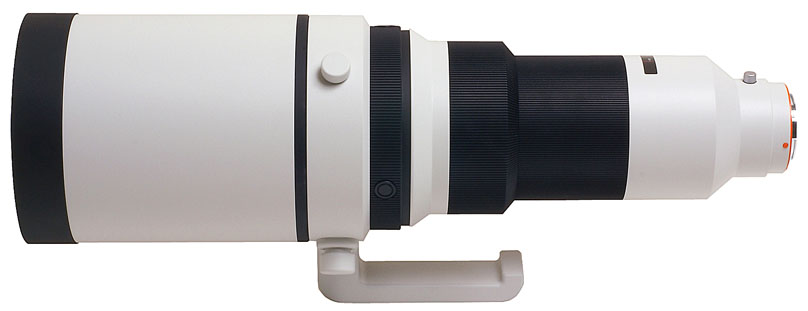
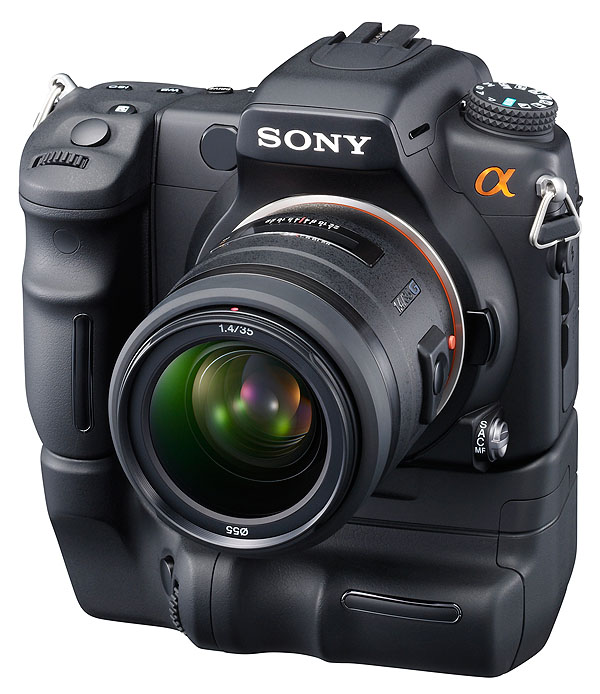
Hey David, I’ve been sending a lot of links to people for this page, and I realized something about the different lens finishes. In having just received the CZ 24-70 and already owning the CZ 85mm, I’ve noticed that they have obviously different finishes. The prime has a deep, satin black metal finish, whilst the zoom has a crackle finish like you mention above. I think the supposed 24mm prime above will be Zeiss, because it looks to have the same finish as my 85mm, and it has a focus hold button. Maybe Sony is doing the Zeiss primes all in satin black, and the zooms in crackle?? Regardless, this is a great post with some well thought out guesses. Cheers!
Pingback: Mi punto de vista - Mis opiniones, pensamientos ,inquietudes, hobbies y conocimientos » Sony Alpha 300 a punto de salir
Pingback: tedadnan.com » Blog Archive » Zen is a Zeiss lens….Pt 3
Pingback: Sony’s new dSLR: the rumor mill cranks into high gear! : Alphatracks
Pingback: Digital Camera Information » Sony Alpha - High end amateur model